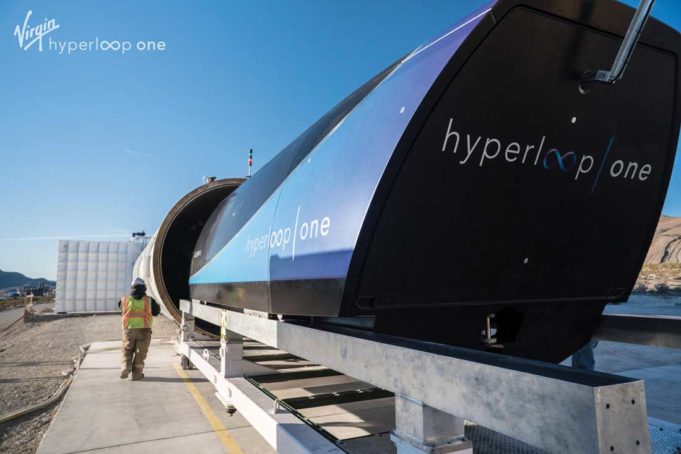Hyperlooping — the futuristic 240 mph mode of transportation — is no pipe dream.
Virgin Hyperloop One, an American aerospace company partnered with Richard Branson’s investment group, is developing the high-speed technology via the XP-1, part of a family of super-fast seated pods that may one day crisscross Texas. Hyperlooping entered the vernacular in 2012, when Tesla magnate Elon Musk suggested the possibility of a high-speed train that travels through a vacuum. Four years later, Virgin Hyperloop One (unaffiliated with Musk) created a working prototype in the Nevada desert. While futuristic in nature, the high-speed pods are built on existing technology. A location has not been announced, but Virgin Hyperloop One officials said they plan to have a working commercial pod in service by as early as 2020.
The Regional Transportation Council (RTC), which represents 12 North Texas counties, recently announced its intent to evaluate the cost, environmental impact, and viability of a hyperloop link between Dallas and Fort Worth. Virgin Hyperloop One engineers estimate that the XP-1 could make the trip in six minutes.
Marcia Christoff, Virgin Hyperloop One public relations manager, described the technology: First, air is removed from the tube in which the XP-1 travels via large vacuum pumps.
“This eliminates aerodynamic drag and weather hazards,” she told me. “The pod is propelled using a proprietary linear electric motor. This accelerates the pod safely and gradually at the same speed of a commercial jet, but without turbulence, using magnetic levitation. The pod glides in a near-vacuum for many kilometers with no additional energy, noise, or friction.”
Sleek marketing descriptions aside, Hyperloop One could be the kick North Texas needs when it comes to public transportation, even if it’s only one slice of the transit pie. Until recently, Arlington had the dubious title of the largest U.S. city without a busing or public transportation system. That city is now experimenting with a flat-fee-based ridesharing program. The face of public transportation in Fort Worth has long been our fleet of buses operated by Trinity Metro. Beyond that, Molly the Trolley services downtown, while the Trinity Railway Express offers a scenic, albeit slow, ride to Dallas. Fort Worth lags behind every other major Texas city in this area (“Fort Worth’s Transit Future,” July 6).
While RTC officials explore the merits of a North Texas hyperloop project, Virgin Hyperloop One is pushing for high-speed travel dominance across the globe. The aerospace company recently announced an agreement to open a $500 million Advanced Technology Development and Testing Center in Spain. Last February, the Indian state of Maharashtra announced its intent to build a hyperloop route to cover the 91 miles between Mumbai and Pune, according to Hyperloop’s website.
RTC officials have expressed interest in the technology. In a recent public statement, RTC chairman Gary Ficks said the XP-1 would be an “exciting technology to have.” RTC director of transportation Michael Morris highlighted the transportation challenges facing North Texas.
“As our region grows from 7.2 million people now up to 11.2 million by 2045, we are planning a transportation system that offers choices to our residents,” he said in a public statement. “Connecting other regions in Texas through hyperloop would open up economic opportunities throughout the state.”
The project has drawn criticism and skepticism from some within the engineering community. Beyond the obvious safety concerns of hurling people at high speeds through a vacuum, questions remain over whether this technology will benefit society or simply service the wealthy.
Christoff said the XP-1 will be accessible through a phone app that allows hyperloopers to enter their destination. “Despite the seemingly futuristic nature of hyperloop travel, trips are an option for everyone, not just the super-rich,” she said.
The day when Fort Worthians can visit the Big D and return in just minutes may or may not be coming anytime soon. The shortened ride would be an economic boon to our two cities. Or, hyperlooping might hasten the Pangaeafication of North Texas into Arlington-Dallasworth. Most North Texans might be OK with that, though, if it means an end to crawling along our ever-more-crowded highway system.
Editor’s note: After mistakenly identifying a rail system in the original story, we have corrected it here.












Just a quick correction to your article – The Trinity Railway Express “offers a scenic, albeit slow, ride to Dallas.” … TEXRail is coming online in January 2019 and will connect Fort Worth to Grapevine and the Airport, and the new Cottonbelt line will connect TEXRail to northern Dallas.